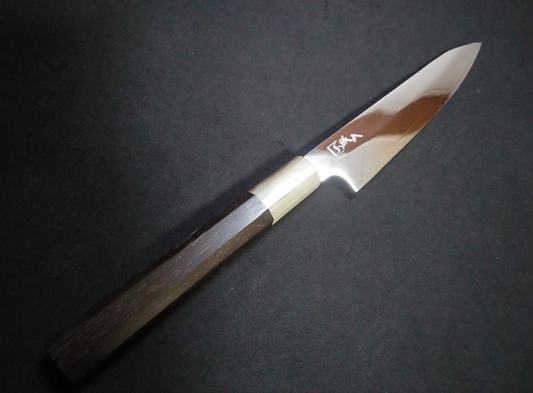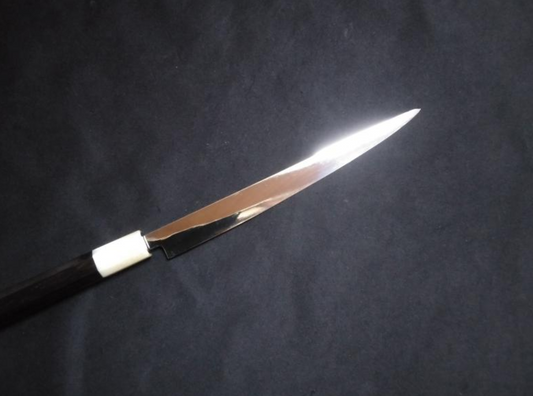
Petty Knife
-
Small Blade, Big Possibilities
Small in size, mighty in spirit.
The Petty Knife handles the little things—with the same precision and artistry as a master’s blade. -
Petty Knife Collection
-
Ginsan Petty 150mm -Polished (both sides)
Regular price $280.00 CADRegular priceUnit price / per$0.00 CADSale price $280.00 CAD -
Super Steel (Honyaki) Petty 180mm
Regular price $350.00 CADRegular priceUnit price / per$0.00 CADSale price $350.00 CAD -

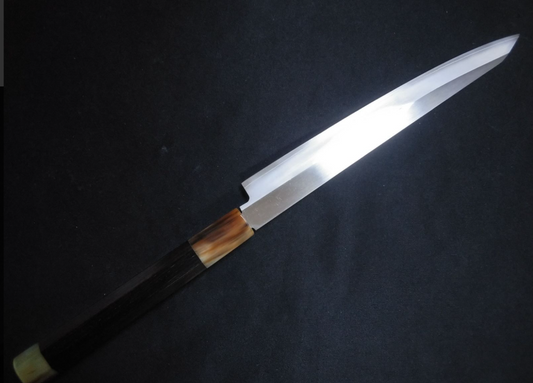 Sold out
Sold outZDP189 Petty 210mm-Kido Finishing
Regular price $420.00 CADRegular priceUnit price / per$0.00 CADSale price $420.00 CADSold out -
Super Steel (Honyaki) Petty 210mm -Mirror Polished(both sides)
Regular price $470.00 CADRegular priceUnit price / per$470.00 CADSale price $470.00 CADSold out -
ZDP189 Petty 210mm-Polished(both sides)
Regular price $527.00 CADRegular priceUnit price / per$0.00 CADSale price $527.00 CADSold out
KIREAJI's Three Promises to You
-

1. Forged in the Legacy of Sakai
From Sakai City—Japan’s renowned birthplace of professional kitchen knives—each blade is crafted by master artisans with over six centuries of tradition. Perfectly balanced, enduringly sharp, and exquisitely finished, every cut carries the soul of true craftsmanship.
-

2. Thoughtful Care for Everyday Use
Every knife includes a hand-fitted magnolia saya for safe storage. Upon request, we offer a complimentary Honbazuke final hand sharpening—giving you a precise, ready-to-use edge from day one.
-

3. A Partnership for a Lifetime
A KIREAJI knife is more than a tool—it is a lifelong companion. With our bespoke paid aftercare services, we preserve its edge and beauty, ensuring it remains as precise and dependable as the day it first met your hand.
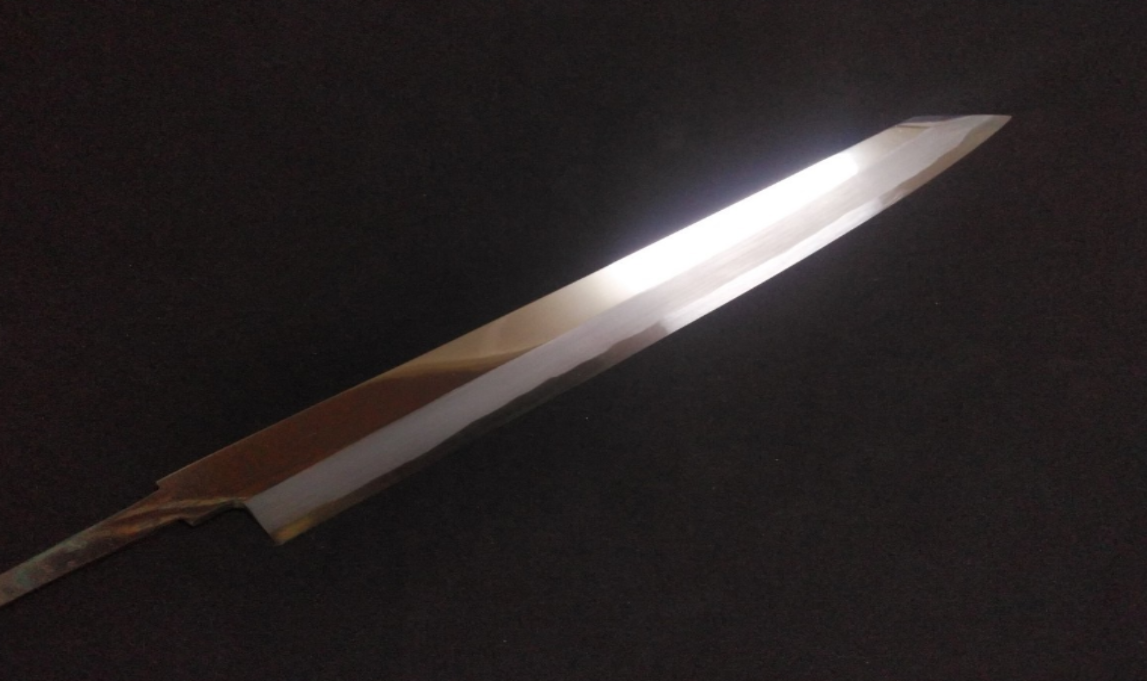
Why Many Product Photos Show Only the Blade
At KIREAJI, every knife is made to order in Sakai, Japan. Photos show the blade before the handle is attached, allowing artisans to perfect the balance and edge for your specific order. Your knife arrives fully finished — tailored just for you.

Global Delivery from Sakai
Across the world, discerning cooks seek authentic Japanese knives from Sakai — Japan’s legendary knife-making city with over 600 years of tradition.
At KIREAJI, we work alongside master artisans in Sakai to fulfill that desire, shipping genuine handcrafted knives directly from the workshop to kitchens worldwide.
Petty Knife
-
What Is a Petty Knife?
At first glance, the Petty Knife may seem simply a small blade. But in the hands of a skilled cook, it becomes one of the most indispensable tools in the kitchen. With a blade length of 120mm to 210mm, the Petty Knife excels at quick, precise tasks—peeling fruit, trimming meat, slicing vegetables, or preparing small fish.
-
In English-speaking countries, it is often referred to as a “paring knife,” named for the peeling motion it performs. In Japan, the word “Petty” derives from the French petit, meaning “small.” Different names, same essential purpose—but Japanese Petty Knives are elevated by centuries of craftsmanship.
-

Why It Stands Out
- Compact & Nimble — Ideal when a full-sized Gyuto feels excessive
- Precision Cutting — Perfect for detail work, from garnishes to delicate fillets
- Japanese Craftsmanship — Forging, heat treatment, and sharpening executed with mastery
- Universal Usability — Often double-edged, making it suitable for both right- and left-handed users
-
A Small Knife with a Big Heart
In Japan, even a small knife is treated with the same reverence as a Gyuto or Yanagiba. Traditional octagonal or round handles fit naturally in the hand, offering both comfort and control. A well-crafted Petty Knife doesn’t just make prep work easier—it inspires you to cook more often and with greater care.
-
Whether you call it a Petty Knife or a paring knife, its essence remains the same: a compact, precision instrument that elevates everyday cooking. Once you welcome one into your kitchen, you’ll wonder how you ever managed without it.
The Petty Knife: Small Blade, Big Precision
-

The Petty knife shines through its quiet precision, delivering delicate control where larger blades feel excessive. Its compact size turns detailed work—peeling, trimming, fine slicing—into an extension of your fingers, embodying the Japanese belief that mastery lives in the smallest movements.
-
Why Choose a Petty Over a Gyuto? — Precision in the Palm of Your Hand
-
For many cooks, the Gyuto Knife is their first serious investment — a versatile, all-purpose workhorse that handles meat, fish, and vegetables with ease.
But as your skills evolve, you may begin to crave something more nimble — a blade that follows your hand with absolute precision.
That is where the Petty Knife comes in. -

Compact by Design, Powerful in Purpose
The Petty Knife, often called a “paring knife” in English, typically measures 120–150mm. Its name comes from the French petit (“small”), and its size is no coincidence. Its shorter blade offers unmatched control for:
-
- Peeling and trimming fruit
- Removing herb leaves one by one
- Cleaning fine membranes from cured meats
- Adding final touches to plating
Yes, a Gyuto can do these tasks — but rarely with such ease and finesse. -
For Professionals and Home Kitchens Alike
In top kitchens across Japan and Europe, chefs rely on both knives: the Gyuto for major cutting, the Petty for precision finishing. At home, the Petty transforms tedious chores like peeling apples into smooth, effortless motions.
-

A Different Kind of Mastery
The Petty Knife is not only about speed — it is about intention.
It allows you to shape ingredients with grace, blending fingertip control and razor precision into seamless movement. In today’s cooking culture, where refinement matters more than volume, the Petty stands as the essential tool for detail-driven cuisine. -
Not a Backup — A Quiet Ace
Next to the mighty Gyuto, the Petty Knife may look like a secondary player. But for precision cuts, small spaces, and perfect finishes, it quietly becomes the knife you reach for most.
It is not an accessory — it is the second knife every cook truly needs.
The Petty Knife: The Quiet Ace That Perfects Your Cooking
-

The Petty knife is not a backup, but an essential partner for precision, control, and refined finishing.
-
FAQ About the Petty Knife
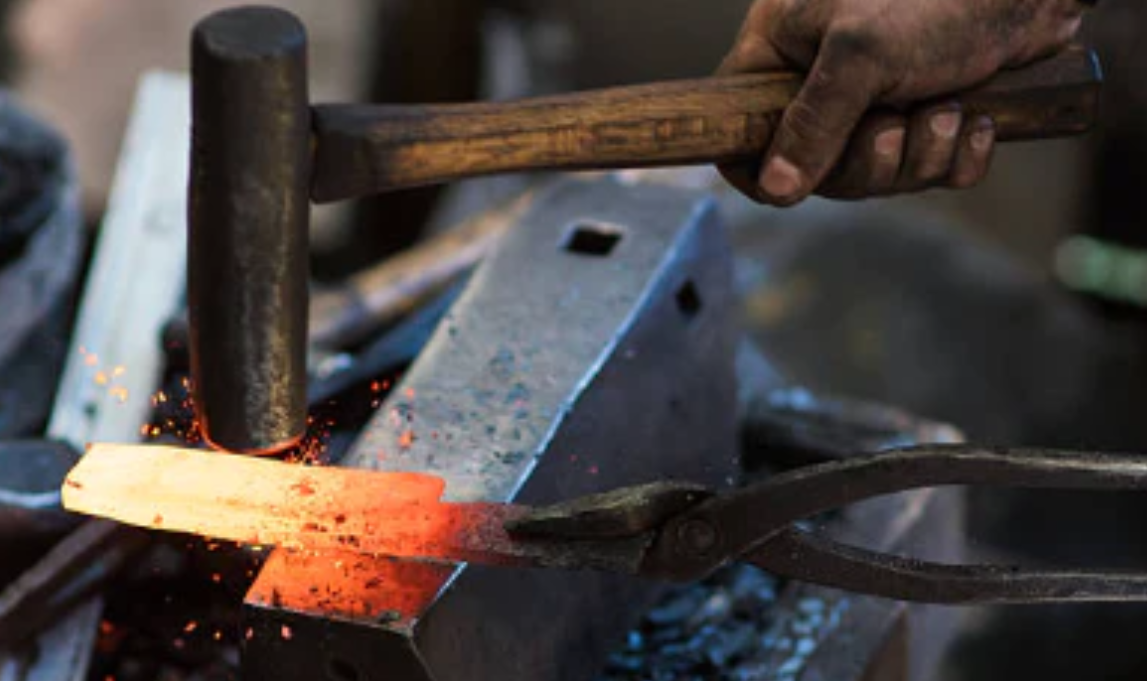
01. What is a Petty knife?
The Petty Knife is a small, lightweight utility knife designed for fine, detailed work in the kitchen. It is often seen as the Japanese counterpart to the Western paring knife, though it typically features a slightly longer blade that makes it more versatile and capable of handling a wider range of tasks.
02. What are the strengths and weaknesses of a Petty knife?
The greatest strength of the Petty Knife lies in its precision. Its compact size makes it perfect for peeling, trimming, and dicing small ingredients, for segmenting fruits or creating decorative cuts, and for delicate tasks like deveining shrimp or trimming fat. The smaller blade allows for excellent control, letting cooks work with speed and confidence. On the other hand, its limitations are clear: it is not designed for cutting large or dense ingredients, it cannot handle bones or frozen foods, and compared to larger knives like the Gyuto or Deba, it offers less power and leverage. In short, it excels at detail-oriented work but is best used alongside a larger blade for heavy-duty cutting.
03. What tasks is the Petty Knife best suited for?
The Petty Knife proves most useful when peeling vegetables or fruits, trimming herbs, meat, or fish, and creating decorative garnishes. It is equally adept at making small, precise cuts, whether on the cutting board or in the hand. Because of its slim profile and light weight, it is especially well-suited for kitchens with limited space or for chefs who need agility in their movements.
04. Who should use a Petty Knife?
The Petty Knife is a versatile tool that serves many kinds of cooks. It is perfect for home cooks who want a reliable small knife for everyday use, for beginners who may find larger knives difficult to control, and for professional chefs who require precision in trimming or plating tasks. The more it is used, the more its value becomes apparent, offering speed, control, and convenience. In time, even the smallest knife proves it can make the biggest difference in cooking.

The Soul of Craftsmanship
-
The Petty Knife — Small in Size, Infinite in Possibility
The petty knife may be small, but it embodies the full spirit of Japanese craftsmanship. Designed for precision, it excels at everyday tasks—peeling fruit, trimming vegetables, or preparing small portions with effortless grace. Where larger knives feel cumbersome, the petty knife moves with speed, accuracy, and intimacy, almost as if it were an extension of your hand.
-
Every blade is meticulously forged and sharpened by hand, carrying within it the same dedication and skill found in larger, more imposing knives. Its compact form highlights the essence of Japanese knife-making: refined beauty, practical versatility, and enduring sharpness.
-
What makes the petty knife truly special is the way it weaves into daily life. Whether used in professional kitchens or at home, it brings elegance to routine tasks and transforms them into moments of craft. Over time, its lightness and precision become a source of quiet joy, making it a trusted companion you’ll reach for again and again.
How Japanese Knives Are Made: The Sakai Tradition
VIDEO PROVIDED: JAPAN TRADITIONAL CRAFTS AOYAMA SQUARE (YOUTUBE)
-
Sakai Forged Blades — Six Centuries of Unrivaled Craftsmanship
Loved by chefs around the world and trusted by 98% of Japan’s top culinary professionals, Sakai knives are more than tools—they are the living legacy of over 600 years of master craftsmanship.
-
At KIREAJI, we work directly with the Shiroyama Knife Workshop in Sakai, Japan, ensuring every blade is hand-forged, finished to perfection, and shipped straight from the workshop to kitchens across the globe. No middlemen. No mass production. Only authentic, artisan-made knives, crafted to elevate your cooking for a lifetime.


